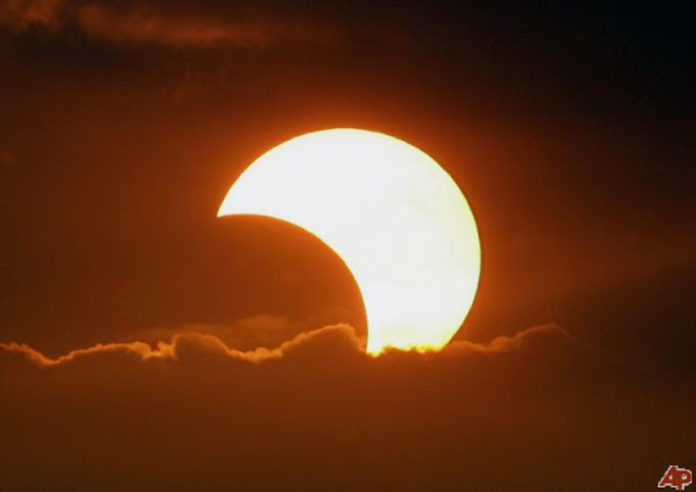On Thursday morning, June 10th, people across the northern hemisphere will have the chance to experience an annular or partial eclipse of the Sun, but folks in the Southeast, including Beaufort SC, only have a chance of seeing a partial eclipse.
A solar eclipse happens when the Moon moves between the Sun and Earth, casting a shadow on Earth, fully or partially blocking the Sun’s light in some areas. During an annular eclipse, the Moon is far enough away from Earth that the Moon appears smaller than the Sun in the sky. Since the Moon does not block the entire view of the Sun, it will look like a dark disk on top of a larger, bright disk. This creates what looks like a ring of fire around the Moon.
People in parts of Canada, Greenland, and northern Russia will experience the annular eclipse, but, in some places, viewers won’t get to see this ring around the Moon.
According to NASA, they’ll instead experience a partial solar eclipse, which is what we may get here in Beaufort SC.
This happens when the Sun, Moon, and Earth are not exactly lined up. The Sun will appear to have a dark shadow on only part of its surface. Viewers in parts of the eastern United States and northern Alaska will see a partial solar eclipse on June 10, along with much of Canada and parts of the Caribbean, Europe, Asia, and northern Africa.
In the United States, the partial eclipse will be visible along parts of the Southeast, Northeast, Midwest, and in Northern Alaska. In many of these locations, the eclipse will occur before, during, and shortly after sunrise. This means that viewers will need to get a clear view of the horizon during sunrise in order to see the eclipse.
Use this tool from NASA to determine the visibility of the eclipse from wherever you are.
How to Safely Watch an Annular or Partial Eclipse
NASA advises that it is never safe to look directly at the Sun’s rays, even if the Sun is partly or mostly obscured. When watching a partial solar eclipse or annular solar eclipse, you must wear solar viewing or eclipse glasses throughout the entire eclipse if you want to face the Sun. Solar viewing or eclipses glasses are NOT regular sunglasses; regular sunglasses are not safe for viewing the Sun.
If you don’t have solar viewing or eclipse glasses, you can use an alternate indirect method, such as a pinhole projector. Pinhole projectors shouldn’t be used to look directly at the Sun, but instead to project sunlight onto a surface.










